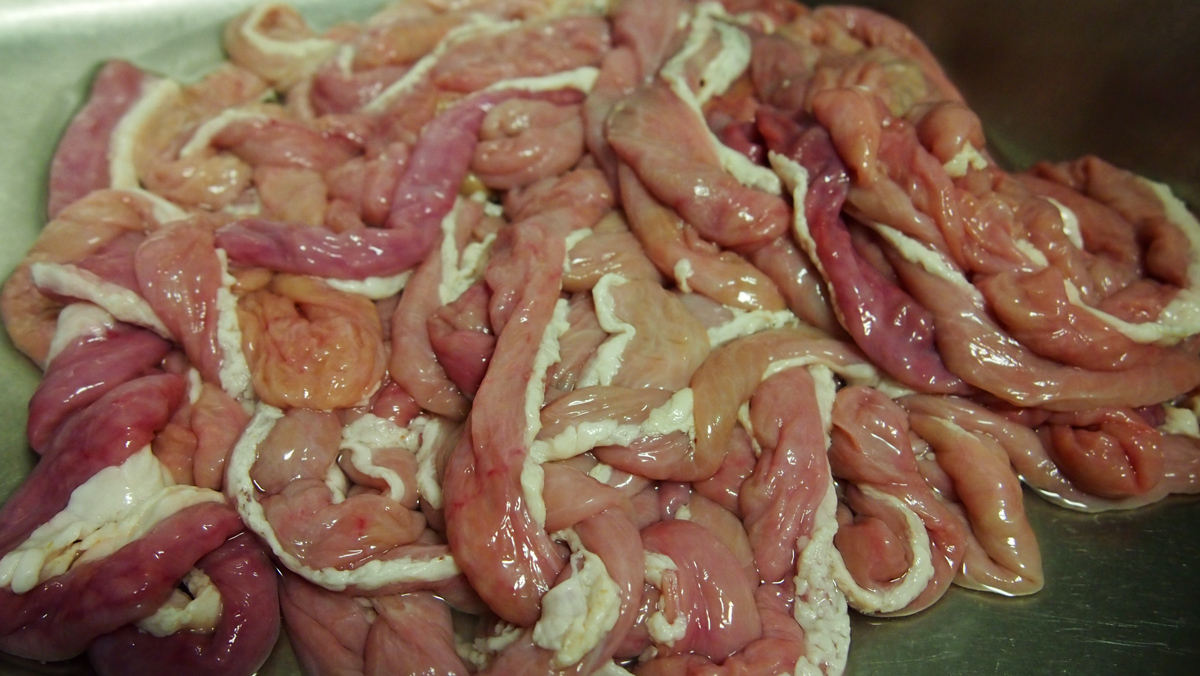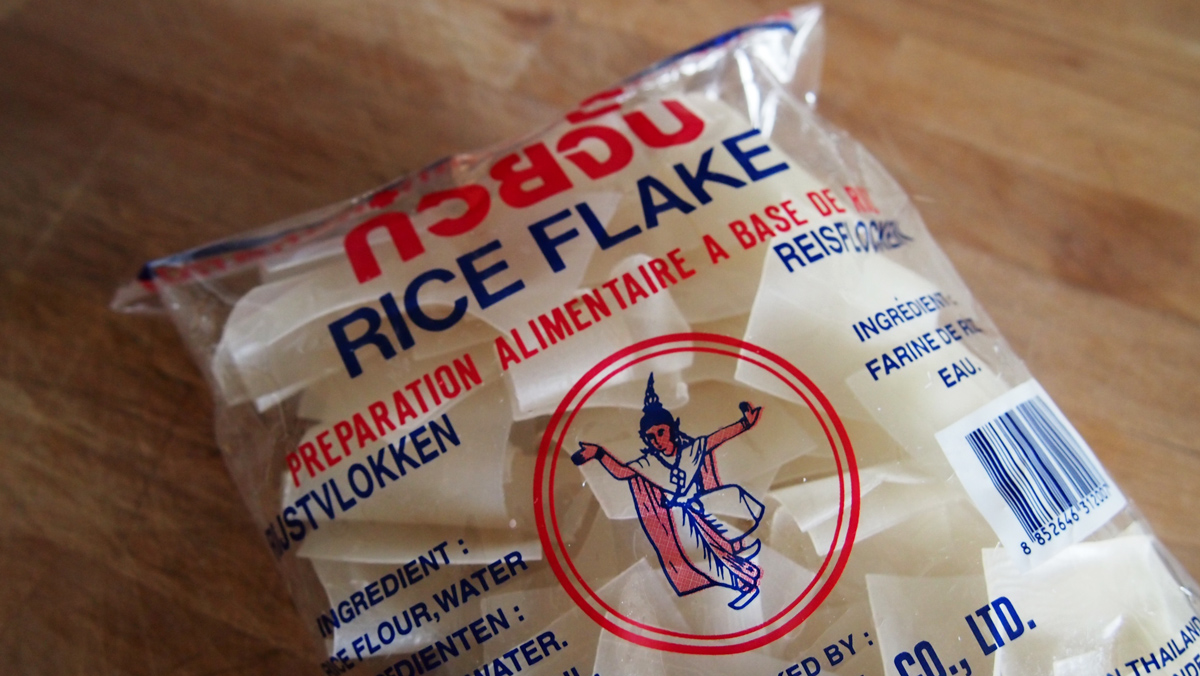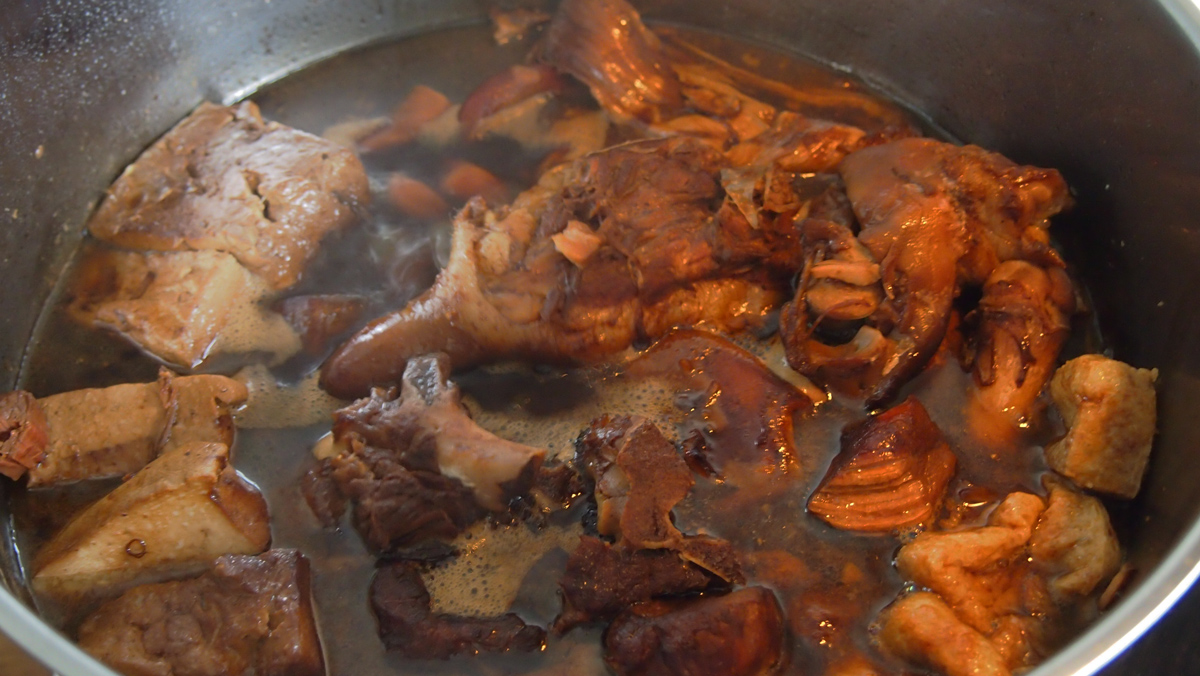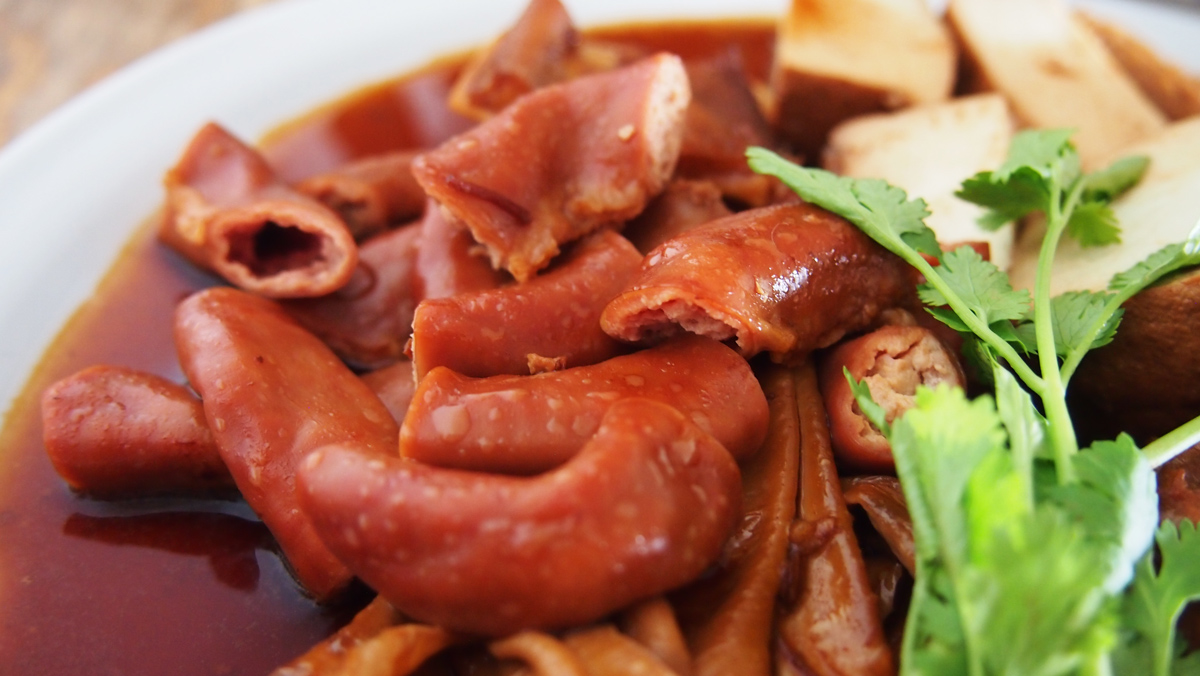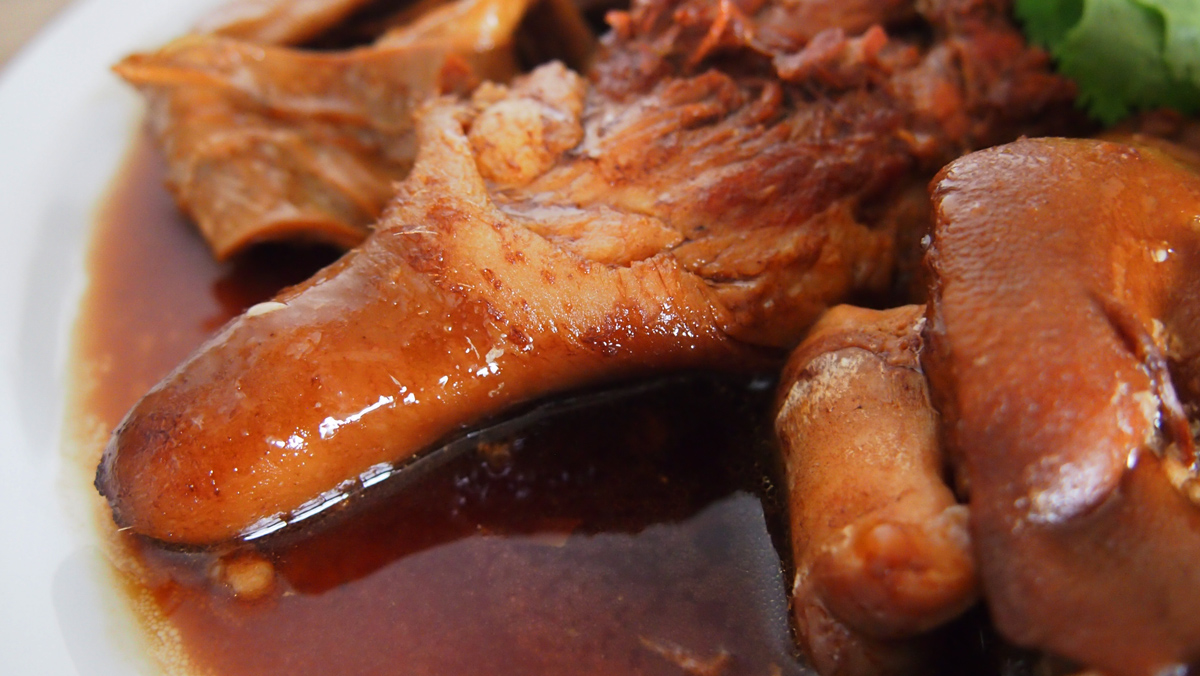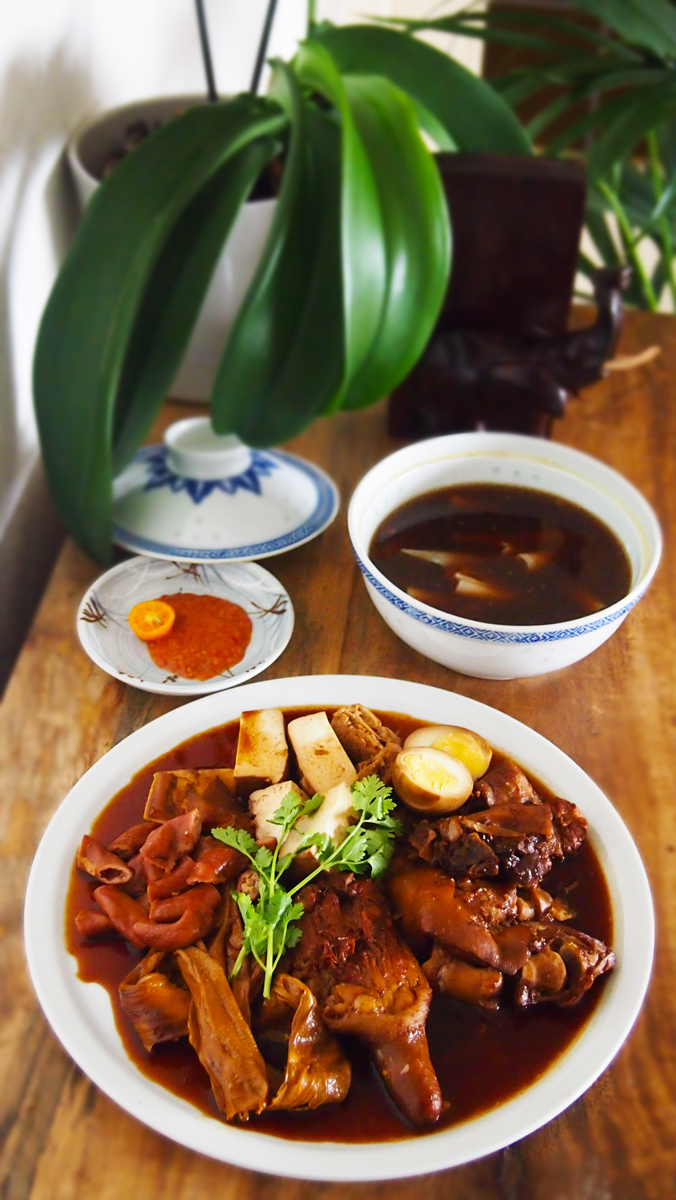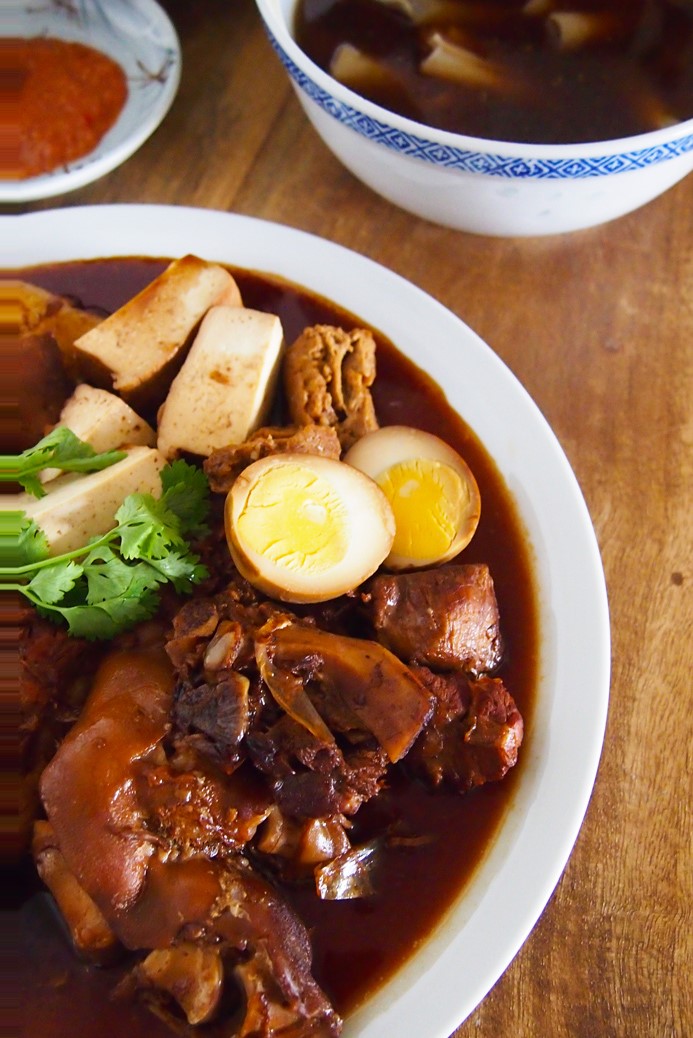
I have taken very long to do up this recipe, because it is not easy to come across the ingredients in this day and age. Organ meat and other parts of the pig apart from the meat are just not popular anymore.
However, I have made a thorough effort in sourcing for the right ingredients, so that you can have a taste of this crown jewel of Teochew cuisine: “kuay chap”.
“Kuay chap” literally means “cake gravy”. The “cake” refers to the thin slices of rice cakes that are cooked in hot boiling water. The cake slices are scooped out and placed in a bowl, and doused with a generous ladle of gravy for the meat stew, topped with whatever that is used in the stew, then garnished with fried shallots and coriander leaves.
As a street food, kuay chap was a lunch food served by the roadside of Chaozhou in Guangdong province. Because of the Teochew diaspora, kuay chap has travelled all over Southeast Asia, and has transformed into various varieties in Thailand, Malaysia and Singapore. In Thailand, internal organs like liver are added and chili flakes are added prior to the serving. In Singapore, the meat is not served in the bowl of cake but on a separate plate.
Despite all the changes, there are features that are identical and valued among all varieties: the importance of slow-cooking for the meat stew so that all the meaty goodness of all organs are combined, the cake slices themselves (the meat stew is never eaten with other staples like rice or noodles), the original Teochew garlic-chili dip sauce.
This recipe follows the original Teochew tradition. I hope you will like it!
Ingredients:
- 1 large pig’s trotter (either cut into half or as a whole)
- 1 pig’s ear
- 1 pig’s tail
- 1-2kg pig’s small intestines
- 1-2kg pig’s large intestines
- 750g pork (for stewing)
- 2 blocks of hard tofu, ‘dougan’ in Mandarin/’daoguah’ in Teochew 豆干
- 5 dried yuba sticks, ‘fuzhu’ in Mandarin/’daogi’ in Teochew 腐竹
- 15-20 fried tofu skin, ‘daopok’ in Teochew 炸豆腐皮/豆仆
- 8 hard-boiled eggs, shelled
- 5 tbs vegetable oil
- 2 whole bunches garlic
- 2 whole fresh ginger
- 5 tps Chinese five-spice powder 五香粉
- 10 tbs Chinese dark vinegar 香醋
- 10 tbs dark soy sauce 老抽
- 5 tbs light soy sauce 生抽
- Salt, to taste
- White pepper powder
- 5 litres water
- 1 packet of dried rice cake slices (you can get these in Thai supermarkets)
- Garlic-chili dip sauce
- Fried shallots
- Coriander leaves
- Corn starch (for washing)
Serving: 5 persons
Instructions:
- Wash your meat and organs well. Remove all traces of hair on the skin. Wash your intestines separately in your sink, by first dousing them with corn starch, then gently rubbing them to ensure the starch sticks on to the dirt. This step is really important because not only will the starch take the dirt away, it will also make sure the bad smell does not go into the stew later on. Once you are done, rinse the intestines thoroughly in water, dry and set aside.
- Cut your pork meat into blocks of 5x5cm. Cutting it smaller will mean that they will dissolve into the stew and never to be seen again.
- Heat up a very large pot with your vegetable oil on medium heat. Crack your ginger with the back of your knife and drop them into the oil together with the two bunches of garlic (the cloves are still held together). Now we are going to cook everything by batch: the hardest things first.
- Place the tail, the trotter and the ear into the oil. Flip them around in the pot with a ladle for a minute. Pour in the water, dark soy sauce, light soy sauce, vinegar, five spice powder, white pepper powder. Bring to boil and cover. Let this simmer on medium-low heat for an hour.
- Now for the second batch of ingredients, once the skin of the tail and ear are now springy (not hard but not soft either). Put in the pork, large and small intestines and yuba sticks. Cover and simmer for another hour on medium-low heat.
- Once the intestines are soft, and the skin of the tail is soft (you can poke through it easily), put in the rest of the ingredients: hard-boiled eggs, hard tofu, fried tofu skin. Cover and let it simmer for about 30-40 minutes.
- Once this is done, add salt to taste. Feel free to alter the taste according to your liking: more dark soy sauce or more light soy sauce or more five-spice powder. Just make sure at all times, the gravy needs to cover the ingredients, so do add more water if your pot is very wide or the cover leaks a lot of steam.
- Take out the meat from the stew: the intestines can be cut into short sections with scissors. The pork can be sliced. The ear can be cut into strips. The pork trotter and tail can also be cut into smaller blocks. Cut the hard-boiled eggs into four. Cut the long yuba sticks into short sections. Cut the tofu into slices.
- Take another medium-sized pot, fill it to half with water and bring to boil. Put in the amount of dried rice cake slices you want. It will expand, turn soft and curl up.
- Once that is done, scoop up the rice cake slices with a ladle and put them into your serving bowls. Make sure you have some of the water you have used to cook the rice cake in. Place some ingredients in each of the serving bowl, then use a ladle to pour piping hot gravy all over the ingredients and rice cakes in each bowl. Garnish with coriander and fried shallots, serve with a dip sauce of garlic-chili.
Alternatively, you can serve it the Singaporean way: Instead of adding the (sliced/chopped up) ingredients int he bowl, place them on a plate and douse them generously with the hot gravy, garnished with coriander. In each serving bowl, add another scoop of gravy onto the rice cake slices.
Enjoy!!
